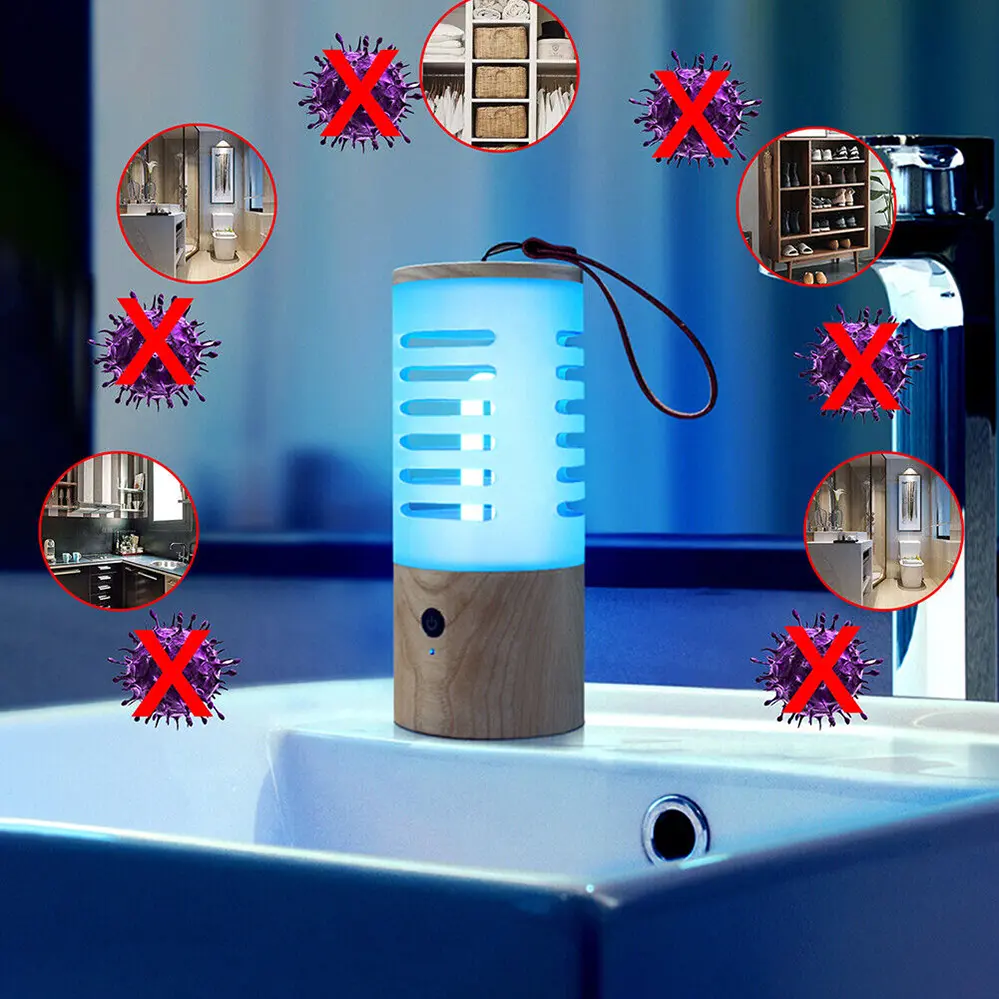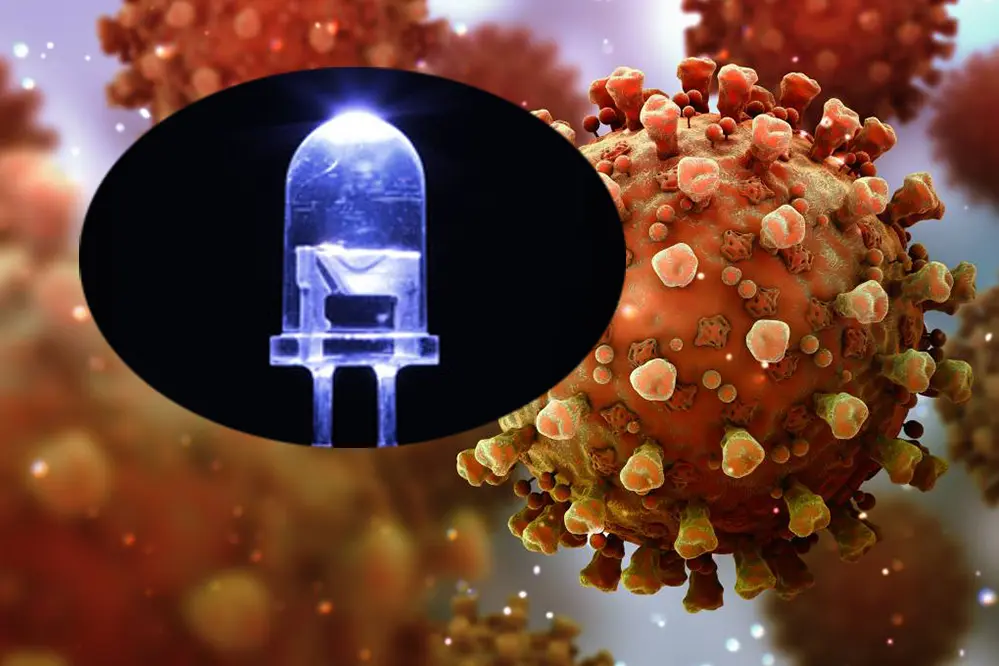Curious about the germ-killing potential of LED lights? Look no further for a definitive answer to this intriguing question.
LED lights can effectively eliminate germs, offering a dual purpose of illumination and sanitation. The integration of antibacterial and germicidal properties into LEDs is a promising advancement in lighting technology, paving the way for safer and cleaner environments.
Discover the science behind how LED lights combat germs and the implications for creating healthier spaces. Keep reading to delve deeper into this illuminating topic.
LED Technology and Germ Elimination

LED lights, particularly those utilizing ultraviolet (UV) wavelengths such as UV-C radiation, have shown promise in eliminating germs. By emitting UV-C light, these LEDs can disrupt the DNA or RNA of microbes, rendering them inactive.
This photobiological effect targets pathogens such as bacteria, viruses, and fungi, providing a non-chemical disinfection method. While conventional cleaning methods have their limitations, integrating UV-C LED germicidal light technology offers an additional layer of sanitation, particularly in areas where hygiene is paramount, such as hospitals and food processing facilities.
How LEDs Target Germs
LEDs use ultraviolet (UV) light—specifically UV-C wavelengths—known in germicidal lights, to target and deactivate the genetic material of germs.
UV-C LEDs can disrupt the DNA of microorganisms, effectively neutralizing their ability to reproduce.
Through photobiological interaction, UV-C LEDs impair pathogens like bacteria, viruses, and fungi, providing a chemical-free disinfection method. This technology is increasingly applied in high-hygiene environments.
With targeted wavelengths, UV-C LED technology offers enhanced sanitation by addressing the limitations of traditional cleaning methods. This makes it particularly valuable in critical settings, such as healthcare and food processing industries.
Effectiveness in Different Environments
The germicidal effectiveness of LED lights can vary significantly depending on the environment in which they are deployed.
- Healthcare Facilities: High microbial load environments where rigorous disinfection is essential.
- Food Processing Plants: Areas requiring stringent sanitation to prevent contamination.
- Commercial Spaces: Offices, schools, and public transport where maintaining hygiene reduces disease spread.
- Residential Settings: Homes where regular disinfection can prevent common illnesses.
Each environment presents unique challenges that affect the effectiveness of LED germicidal action. Therefore, tailored solutions are necessary.
Optimal placement and exposure duration are crucial for achieving the desired sanitation levels in different settings.
Comparing LEDs to Other Germicidal Methods
Ultraviolet (UV) light, particularly UVC, has long been the gold standard in non-chemical germicidal methods.
In contrast, LED germicidal technologies offer advantages such as energy efficiency and longer lifespans. Moreover, LEDs can be fine-tuned to emit specific wavelengths, which is crucial for targeting particular microorganisms.
Both “UV-C” and “LED-C” lights hold potential but differ in practical applications.
UV Light vs. LED
Is LED technology as effective as traditional UV light for eliminating germs in various settings?
Since 2016, LED advancements, particularly in germicidal applications, have garnered significant interest. Researchers have explored various wavelengths to enhance their germicidal prowess and compare them with the established efficacy of UV light.
However, it’s worth noting that UV light’s impact is primarily due to its ability to induce photochemical reactions in microorganisms, effectively disrupting their DNA and RNA structures and inhibiting their ability to reproduce.
While LEDs can be engineered to emit within the germicidal UVC range, they are not inherently as powerful as traditional mercury-vapor UV lamps. The efficacy of LED germicidal solutions hinges on factors like wavelength precision, exposure time, and surface coverage.
In summary, while LED germicidal technologies show promise and offer distinct advantages, they currently do not match the raw germicidal power of conventional UV light systems.
Chemical Disinfectants vs. LED
In recent years, there has been increased interest in LED’s potential to disinfect surfaces effectively.
Chemical disinfectants, such as bleach and alcohol-based solutions, have been long established as reliable means of eliminating a variety of pathogens, including bacteria and viruses. These products break down cell walls, denature proteins, and effectively neutralize microorganisms’ ability to infect or reproduce. Their efficacy has been validated across numerous studies and practical applications, making them a staple in both medical and household cleaning protocols.
However, chemical disinfectants require proper handling and ventilation due to their potential toxicity and residual effects. LED lights, specifically those emitting UVC wavelengths, present an alternative with a more user-friendly approach. LEDs operate without direct contact with surfaces, reducing the risk of cross-contamination and the need for chemical disposal or dilution.
In comparison, LEDs offer an appealing promise of continuous, hands-free disinfection that minimizes human error and environmental impact. While traditional chemical disinfectants remain highly effective, advancements in LED technology are making them a competitive option for integrating passive and automated disinfection methods in diverse settings.
Real-world Applications of LED Germicidal Lights

Germicidal lights, especially LED germicidal lights, have found promising real-world applications, particularly in healthcare settings, where sterilization is paramount. Hospitals utilize UVC LED germicidal lights to disinfect surgical instruments and patient rooms. Similarly, public transportation systems incorporate these lights to sanitize high-touch areas, such as seats and handrails, ensuring a safer environment for passengers. Additionally, food processing facilities employ LED germicidal lighting to maintain hygiene standards, safeguarding against contamination. Overall, these applications underscore the versatility and effectiveness of LED germicidal lights in enhancing public health and safety.
Hospitals and Medical Facilities
Hospitals and medical facilities prioritize hygiene and are increasingly adopting LED germicidal lights for disinfection.
- Sterilization of Surgical Instruments: UVC LED lights provide a chemical-free method to sterilize tools.
- Patient Room Disinfection: Continuous air and surface disinfection using these LEDs ensure reduced infection risks.
- Sanitization of High-touch Surfaces: LED germicidal lights are deployed in areas such as nurses’ stations and waiting rooms.
- Reduction of Healthcare-associated Infections (HAIs): Regular usage of LED germicidal lighting has shown a decline in HAIs.
These applications are instrumental in creating safer healthcare environments.
Ultimately, the integration of LED germicidal lights in medical settings underscores a commitment to advanced hygiene practices and patient safety.
Home and Personal Use
LED germicidal lights are increasingly being considered for home and personal use to enhance domestic hygiene.
These lights can be used in bathrooms, kitchens, and living spaces.
Such applications are particularly valuable during flu seasons or when household members are sick, providing an added layer of protection.
Furthermore, portable LED germicidal devices offer on-the-go sterilization, making it easier to maintain cleanliness and hygiene in various environments, including while traveling. In essence, leveraging LED germicidal technology at home and personal spaces can significantly contribute to a healthier living environment.
Potential Limitations and Challenges
Despite their numerous advantages, LED germicidal lights face some limitations. The most significant challenge lies in ensuring uniform exposure, as shadows and obstructions can impede the lights’ effectiveness, leaving certain areas untreated.
Moreover, there is the concern of “shadowed zones,” which are areas not directly exposed to the LED light, potentially reducing the overall efficacy of the disinfection process. Additionally, the energy efficiency and longevity of LEDs can vary, and ensuring optimal operational conditions is critical for maximum germicidal effectiveness.
Coverage and Intensity Issues
Effective germicidal action depends on uniform coverage.
One critical issue with LED germicidal lights is achieving consistent coverage. When installing these lights, it’s essential to address the potential shadowing caused by obstructions, which can lead to untreated zones. Consequently, this inconsistent exposure hampers the germicidal efficacy across the targeted area, necessitating meticulous planning and placement.
Intensity matters significantly.
The germicidal effectiveness of LEDs is contingent upon their intensity – the higher the intensity, the more effective they are in neutralizing microorganisms. Therefore, ensuring that the LEDs are operating at the appropriate intensity levels is crucial.
Strategic placement and regular maintenance can mitigate these issues considerably. By optimizing the positioning of LED germicidal lights and routinely checking their intensity, it’s possible to maximize their disinfectant capabilities while minimizing any shadowed zones.
For professional applications, advanced computational modeling and photometric analysis can enhance the uniformity and efficiency of LED germicidal lighting systems, ensuring that institutions meet the rigorous standards expected in 2023 and beyond. Ongoing advancements in LED technology promise to address these challenges, leading to more reliable and effective germicidal solutions.
Long-term Efficacy
Assessing the long-term efficacy of LED germicidal lights involves understanding key performance metrics over extended periods.
- Intensity Degradation: Monitoring the decline in light intensity over time.
- Material Durability: Evaluating the lifespan of the LED materials under continuous use.
- Consistent Efficacy: Ensuring germicidal effectiveness remains high despite operational wear and tear.
- Maintenance Needs: Determining the frequency and complexity of maintenance required to retain optimal performance.
- Cost-Effectiveness: Analyzing ongoing costs in relation to sustained efficacy.
Maintaining high efficacy levels long-term involves regular checks and possible recalibrations.
Advanced modeling tools can predict performance and guide maintenance strategies effectively.
Conclusion
In summary, LED lights have shown potential in eliminating germs effectively.
However, further research is necessary to confirm their efficacy.
Consistency and long-term performance are critical factors that need thorough evaluation.
While LEDs present a promising path for germicidal applications, their true potential will be realized through ongoing innovation, stringent testing, and adherence to maintenance protocols. Professionals must remain vigilant in assessing these factors to ensure the highest standards of health and safety.





